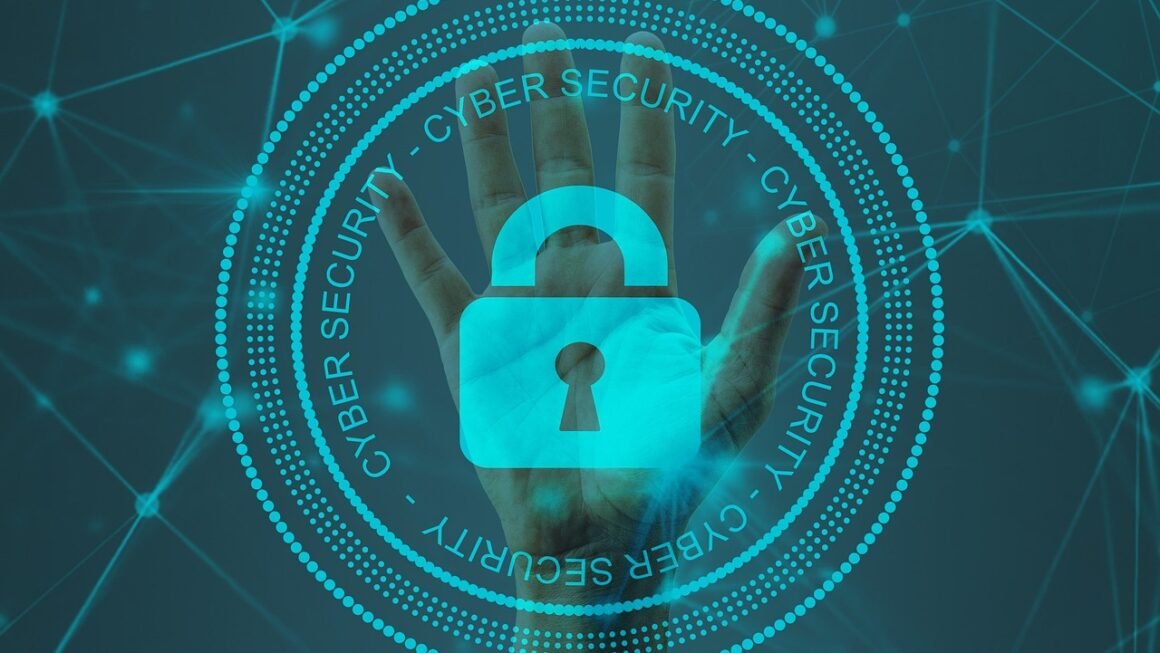In today’s interconnected world, where data is the lifeblood of organizations, ensuring robust network security is no longer optional—it’s an absolute necessity. A single security breach can result in devastating financial losses, reputational damage, and legal repercussions. This blog post dives deep into the world of network security, exploring its key components, common threats, and essential strategies for safeguarding your digital assets. Whether you’re a business owner, IT professional, or simply a security-conscious individual, this comprehensive guide will equip you with the knowledge to navigate the complex landscape of network security and fortify your defenses.
Understanding Network Security
What is Network Security?
Network security encompasses the policies, procedures, and technologies implemented to protect the integrity, confidentiality, and accessibility of computer networks and the data transmitted over them. It’s a multifaceted approach involving hardware, software, and human elements working together to prevent unauthorized access, misuse, modification, or denial of network resources.
- Key Goals of Network Security:
Confidentiality: Ensuring that sensitive information is only accessible to authorized users.
Integrity: Maintaining the accuracy and completeness of data, preventing unauthorized modifications.
Availability: Guaranteeing that network resources and services are accessible to authorized users when needed.
Why is Network Security Important?
The importance of network security cannot be overstated, given the increasing sophistication and frequency of cyberattacks. Here are some critical reasons why it matters:
- Data Protection: Protects sensitive data, including customer information, financial records, and intellectual property, from theft or misuse.
- Business Continuity: Prevents disruptions to business operations caused by malware, ransomware, or denial-of-service attacks.
- Reputation Management: Safeguards the organization’s reputation by preventing data breaches that can erode customer trust.
- Regulatory Compliance: Helps organizations comply with industry regulations such as HIPAA, GDPR, and PCI DSS, avoiding hefty fines and legal penalties.
- Financial Security: Minimizes financial losses associated with cybercrime, including direct theft, recovery costs, and legal settlements.
- Example: Consider a small e-commerce business. A data breach exposing customer credit card information could lead to significant financial losses, legal liabilities, and irreparable damage to its reputation, potentially forcing the business to shut down.
Common Network Security Threats
Malware
Malware, short for malicious software, is a broad term encompassing various types of harmful programs designed to infiltrate and damage computer systems and networks.
- Types of Malware:
Viruses: Self-replicating programs that attach themselves to other files and spread to other systems.
Worms: Self-replicating programs that can spread across networks without human interaction.
Trojans: Malicious programs disguised as legitimate software.
Ransomware: Malware that encrypts data and demands a ransom payment for its decryption.
Spyware: Malware that secretly monitors user activity and collects sensitive information.
Adware: Malware that displays unwanted advertisements.
- Practical Tip: Regularly scan your systems with updated antivirus software and be cautious about downloading files or clicking on links from untrusted sources.
Phishing
Phishing is a deceptive technique used by cybercriminals to trick individuals into revealing sensitive information, such as usernames, passwords, and credit card details.
- How Phishing Works:
Attackers typically send fraudulent emails, text messages, or social media messages that appear to be from legitimate organizations.
These messages often contain links to fake websites that mimic the appearance of real websites, where users are prompted to enter their credentials.
- Example: An employee receives an email purportedly from their bank asking them to verify their account details by clicking on a link. The link directs them to a fake website that looks identical to the bank’s website, where they unknowingly enter their username and password, giving the attacker access to their bank account.
Denial-of-Service (DoS) and Distributed Denial-of-Service (DDoS) Attacks
DoS and DDoS attacks aim to disrupt network services by overwhelming them with excessive traffic, making them unavailable to legitimate users.
- DoS Attack: A single attacker floods a target system with traffic.
- DDoS Attack: Multiple compromised systems (often a botnet) are used to flood a target system with traffic.
- Example: A website experiences a sudden surge in traffic from thousands of different IP addresses, causing it to slow down or become completely inaccessible to users.
Man-in-the-Middle (MitM) Attacks
MitM attacks involve an attacker intercepting and potentially altering communication between two parties without their knowledge.
- How MitM Attacks Work:
The attacker positions themselves between the sender and receiver, intercepting the traffic and potentially modifying the data before forwarding it.
- Example: While connected to an unsecured public Wi-Fi network, a user enters their credit card details on a website. An attacker intercepts the traffic and steals the credit card information.
Essential Network Security Measures
Firewalls
Firewalls act as a barrier between a trusted internal network and an untrusted external network (such as the internet), controlling network traffic based on predefined security rules.
- Types of Firewalls:
Hardware Firewalls: Physical devices that sit between the network and the internet.
Software Firewalls: Software applications installed on individual computers or servers.
Next-Generation Firewalls (NGFWs): Advanced firewalls that offer additional features such as intrusion prevention, application control, and deep packet inspection.
- Practical Tip: Configure your firewall to block all incoming traffic by default and only allow specific ports and protocols that are necessary for legitimate applications.
Intrusion Detection and Prevention Systems (IDS/IPS)
IDS/IPS monitor network traffic for suspicious activity and take action to prevent or mitigate threats.
- IDS (Intrusion Detection System): Detects malicious activity and alerts administrators.
- IPS (Intrusion Prevention System): Detects malicious activity and automatically takes action to block or prevent it.
- Example: An IDS detects a large number of failed login attempts to a server and alerts the administrator. An IPS detects a malware signature in network traffic and automatically blocks the connection.
Virtual Private Networks (VPNs)
VPNs create a secure, encrypted connection over a public network, allowing users to access network resources remotely with increased security.
- Benefits of Using a VPN:
Data Encryption: Encrypts all data transmitted between the user’s device and the VPN server.
IP Address Masking: Hides the user’s real IP address, making it more difficult to track their online activity.
Secure Remote Access: Provides secure access to corporate networks from remote locations.
- Practical Tip: Use a VPN when connecting to public Wi-Fi networks to protect your data from eavesdropping.
Access Control
Access control mechanisms restrict access to network resources based on user identity and authorization.
- Types of Access Control:
Authentication: Verifying the identity of a user or device.
Authorization: Determining what resources a user or device is allowed to access.
Accounting: Tracking user activity and resource usage.
- Example: Implementing multi-factor authentication (MFA) requires users to provide multiple forms of identification, such as a password and a one-time code sent to their mobile device, making it more difficult for attackers to gain unauthorized access.
Network Segmentation
Network segmentation involves dividing a network into smaller, isolated segments to limit the impact of a security breach.
- Benefits of Network Segmentation:
Reduced Attack Surface: Limits the scope of a security breach by preventing attackers from accessing the entire network.
Improved Containment: Allows for faster containment of security incidents.
Enhanced Monitoring: Simplifies network monitoring and security analysis.
- Example: Separating the guest Wi-Fi network from the corporate network prevents guests from accessing sensitive internal resources.
Regular Security Audits and Penetration Testing
Conducting regular security audits and penetration testing helps identify vulnerabilities in the network infrastructure and security controls.
- Security Audit: A comprehensive review of an organization’s security policies, procedures, and controls.
- Penetration Testing: A simulated attack on the network to identify and exploit vulnerabilities.
- Practical Tip: Conduct penetration testing at least annually to identify and address security weaknesses before they can be exploited by attackers.
Importance of Employee Training and Awareness
Educating Employees on Security Best Practices
Employee training and awareness programs are crucial for building a strong security culture within an organization. Employees should be educated on:
- Identifying Phishing Emails: Teach employees how to recognize suspicious emails and avoid clicking on malicious links or attachments.
- Password Security: Emphasize the importance of using strong, unique passwords and avoiding password reuse.
- Social Engineering: Educate employees on social engineering tactics used by attackers to manipulate them into revealing sensitive information.
- Data Handling: Train employees on proper data handling procedures, including how to securely store, transmit, and dispose of sensitive data.
- Reporting Security Incidents: Encourage employees to report any suspicious activity or security incidents immediately.
- Example: Conducting regular phishing simulations can help employees identify and avoid real phishing attacks.
Maintaining Up-to-Date Systems and Software
Patch Management
Keeping systems and software up-to-date with the latest security patches is essential for mitigating vulnerabilities that attackers can exploit.
- Importance of Patching:
Security patches address known vulnerabilities in software and operating systems.
Failing to apply security patches can leave systems vulnerable to attack.
- Practical Tip: Implement an automated patch management system to ensure that security patches are applied promptly.
Software Updates
Regularly updating software applications and operating systems is crucial for maintaining security and performance.
- Benefits of Software Updates:
Security enhancements.
Bug fixes.
Performance improvements.
New features.
- Example: Enabling automatic updates for your operating system and applications ensures that you always have the latest security patches and features.
Conclusion
Network security is an ongoing process that requires vigilance, adaptability, and a comprehensive approach. By understanding the threats, implementing essential security measures, and prioritizing employee training, organizations can significantly reduce their risk of falling victim to cyberattacks. Remember that network security is not a one-time fix but rather a continuous journey of improvement and adaptation to the ever-evolving threat landscape. Staying informed about the latest security trends and technologies is critical for maintaining a robust and secure network environment.



